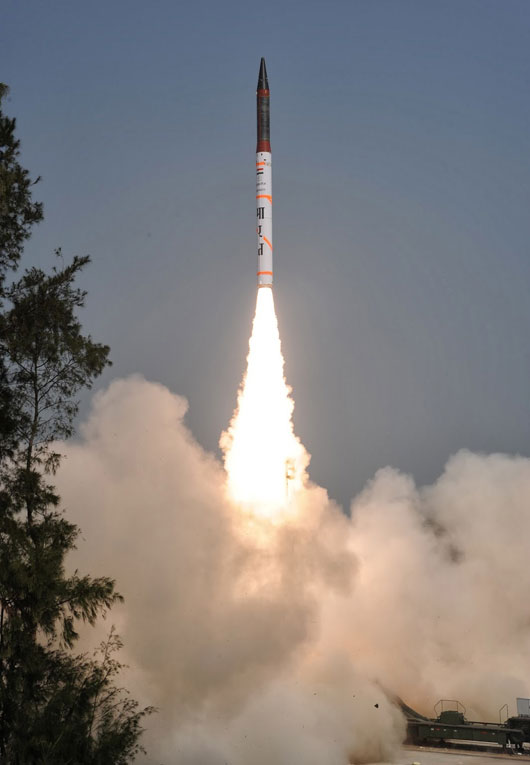
India successfully launched today (Monday, January 20, 2014) its nuclear-capable strategic missile Agni-IV. It was the third test flight, as part of the developmental trials currently underway prior to the missile’s induction with India’s strategic missile force. The first flight was conducted on 15 November 2011, the second on 19 September 2012, from the same test site at the Wheeler Island in Orisa.
The 20 meter long missile has a strike range of about 4,000 km. An advanced, two-stage intermediate range missile, AGNI IV uses two solid-rocket propelled stages. It weighs 17 tonns and is designed for operation from a mobile launcher. The missile carries a warhead weighing about one ton. To enable the reentry vehicle to survive the ultra high temperatures of the reentry stage the RV case has been treated to survive high temperatures. According to the DRDO press release, The re-entry heat shield withstood temperatures in the range of 4000 degree centigrade and made sure the avionics function normally with inside temperature remaining less than 50 degree centigrade.
The missile employs an advanced avionic architecture comprising triple-redundant navigation system integrating ring-laser gyro (RLG), inertial navigation (INS) unit and micro-navigational system (MINGS) digital flight control, high speed communications bus and high-speed computer, all developed indigenously by the Indian defense industry and Defense Research and Development Organization (DRDO).

















